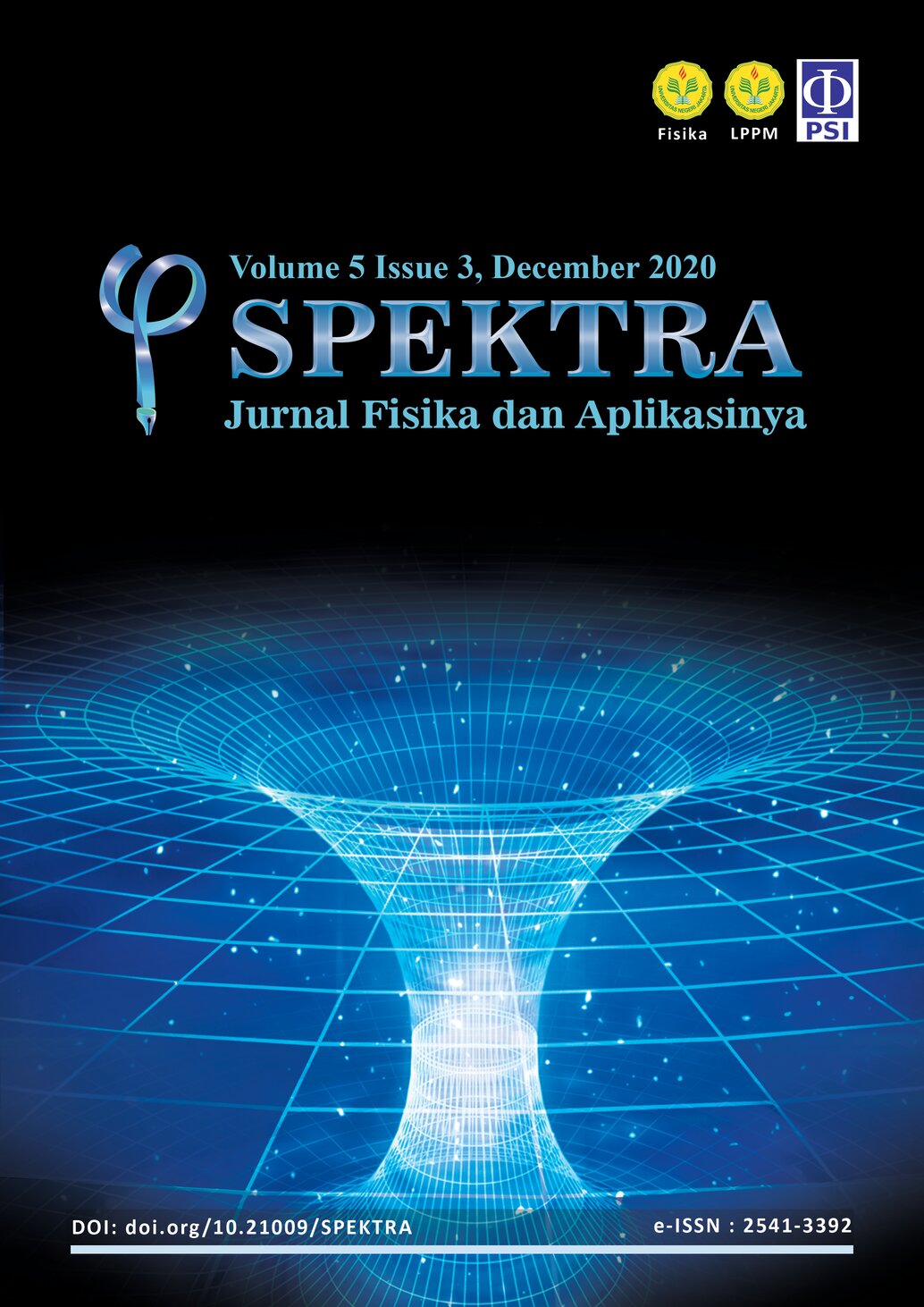COMPARISON STUDY OF VERTICAL CYLINDER TANK DIAMETER MEASUREMENT BETWEEN STRAPPING AND OPTICAL METHOD
DOI:
https://doi.org/10.21009/SPEKTRA.053.07Keywords:
vertical cylinder tank, calibration, strapping method, optical methodAbstract
Vertical Cylinder Tank is used as a storage area or as a measuring tool. Liquids are used in the form of Fuel oil, Liquid Natural Gas, vegetable liquids, and other chemical liquids. The tank calibration results are in the form of a volume per height table that is used as a reference by Automatic Tank Gauging. There are two tank calibration methods, namely: the strapping method and the optical method. The process of measuring the inside or outside diameter of the tank becomes very important in the tank calibration process—the measurement of tank diameter by the strapping method using steel meters manually. At the same time, the optical method uses theodolite or total station. For tank diameters ≤ 5 m, the strapping method has smaller diameter measurement results with a difference of 0.7% compared to the optical method. In further research, a prototype can be developed that can accelerate the calibration process using the strapping method (for example, a vertical track measuring robot) or a low-cost prototype theodolite
References
[2] Departemen Perdagangan Republik Indonesia, “Syarat Teknis Tangki Ukur Silinder Tegak,” in KEPUTUSAN DIREKTUR JENDERAL PERDAGANGAN DALAM NEGERI NOMOR 25/PDN/KEP/3/2010, Direktur Jenderal Perdagangan Dalam Negeri, Kementerian Perdagangan D. ST-25, 2010.
[3] V. Y. Aibe et al., “Flow meter calibration by volumetric method and by weighing method using an innovative system,” J. Phys. Conf. Ser, vol. 648, no. 1, pp. 3-6, 2015, doi: 10.1088/1742-6596/648/1/012016.
[4] ISO-7507-1, “Petroleum and liquid petroleum products - Calibration of vertical cylindrical tanks - Part 1: Strapping method,” 2003.
[5] API-MPMS-2.2A, “Manual of Petroleum Management Standard Chapter 2-Tank Calibration. Measurement and Calibration of Upright Cylindrical Tanks by the Manual Tank Strapping Method,” 1995.
[6] V. V. Nosach and B. M. Belyaev, “The calibration of large vertical cylindrical tanks by a geometrical method,” Meas. Tech, vol. 45, no. 11, pp. 1153-1157, 2002, doi: 10.1023/A:1022062532494.
[7] ISO-7507-2, “Petroleum and liquid petroleum products - Calibration of vertical cylindrical tanks - Part 2: Optical-reference-line method,” 2005.
[8] ISO-7507-3, “Petroleum and liquid petroleum products - Calibration of vertical cylindrical tanks - Part 3: Optical-triangulation method,” 2006.
[9] ISO-7507-4, “Petroleum and liquid petroleum products - Calibration of vertical cylindrical tanks - Part 4:Internal electro-optical distance-ranging method,” 2010.
[10] ISO-7507-5, “Petroleum and liquid petroleum products - Calibration of vertical cylindrical tanks - Part 5:External electro-optical distance-ranging method,” 2000.
[11] O. O. Agboola et al., “Comparative Analysis of Manual Strapping Method (MSM) and Electro-Optical Distance Ranging (EODR) Method of Tank Calibration,” J. Phys. Conf. Ser, vol. 1378, no. 2, pp. 1-10, 2019.
[12] V. V Nosach and B. M. Belyaev, “Salient Features of Procedures For Geometric Calibration Of Large Vertical Cylindrical Tanks,” Meas. Tech, vol. 46, no. 1, pp. 35-37, 2003.
[13] V. Knyva, M. Knyva, and J. Rainys, “New approach to calibration of vertical fuel tanks,” Elektron. ir Elektrotechnika, vol. 19, no. 8, pp. 37-40, 2013.
[14] OIML-R71, “Fixed storage tanks. General requirements,” in OIML Recomendation, France: OIML, pp. 1-32, 2008.
[15] M. Ahmed, M. Eich, and F. Bernhard, “Design and Control of MIRA: A Lightweight Climbing Robot for Ship Inspection,” Int. Lett. Chem. Phys. Astron, vol. 55, pp. 128-135, 2018.
[16] K. P. Panchal, “Design & Develop the Prototype of Wall Climbing Robot,” Int. J. Adv. Eng. Res. Dev, vol. 1, no. 05, pp. 1-6, 2018.
[17] S. Nansai and R. Mohan, “A Survey of Wall Climbing Robots: Recent Advances and Challenges,” Robotics, vol. 5, no. 3, p. 14, 2016.
[18] O. O. Agboolab et al., “Modelling of cost estimates for the geometrical calibration of upright oil storage tanks,” Int. J. Energy Econ. Policy, vol. 10, no. 1, pp. 464-470, 2020.
Downloads
Published
How to Cite
Issue
Section
License
SPEKTRA: Jurnal Fisika dan Aplikasinya allow the author(s) to hold the copyright without restrictions and allow the author(s) to retain publishing rights without restrictions. SPEKTRA: Jurnal Fisika dan Aplikasinya CC-BY or an equivalent license as the optimal license for the publication, distribution, use, and reuse of scholarly work. In developing strategy and setting priorities, SPEKTRA: Jurnal Fisika dan Aplikasinya recognize that free access is better than priced access, libre access is better than free access, and libre under CC-BY or the equivalent is better than libre under more restrictive open licenses. We should achieve what we can when we can. We should not delay achieving free in order to achieve libre, and we should not stop with free when we can achieve libre.
 SPEKTRA: Jurnal Fisika dan Aplikasinya is licensed under a Creative Commons Attribution 4.0 International License.
SPEKTRA: Jurnal Fisika dan Aplikasinya is licensed under a Creative Commons Attribution 4.0 International License.
You are free to:
Share - copy and redistribute the material in any medium or format
Adapt - remix, transform, and build upon the material for any purpose, even commercially.
The licensor cannot revoke these freedoms as long as you follow the license terms.

 E-ISSN 2541-3392
E-ISSN 2541-3392  Focus & Scope
Focus & Scope  Editorial Team
Editorial Team  Reviewer Team
Reviewer Team  Author Guidelines
Author Guidelines  Article Template
Article Template  Author Fee
Author Fee  Publication Ethics
Publication Ethics  Plagiarism Policy
Plagiarism Policy  Open Access Policy
Open Access Policy  Peer Review Process
Peer Review Process  Retraction & Correction
Retraction & Correction  Licensing & Copyright
Licensing & Copyright  Archiving & Repository
Archiving & Repository  Contact
Contact  Mendeley
Mendeley 

